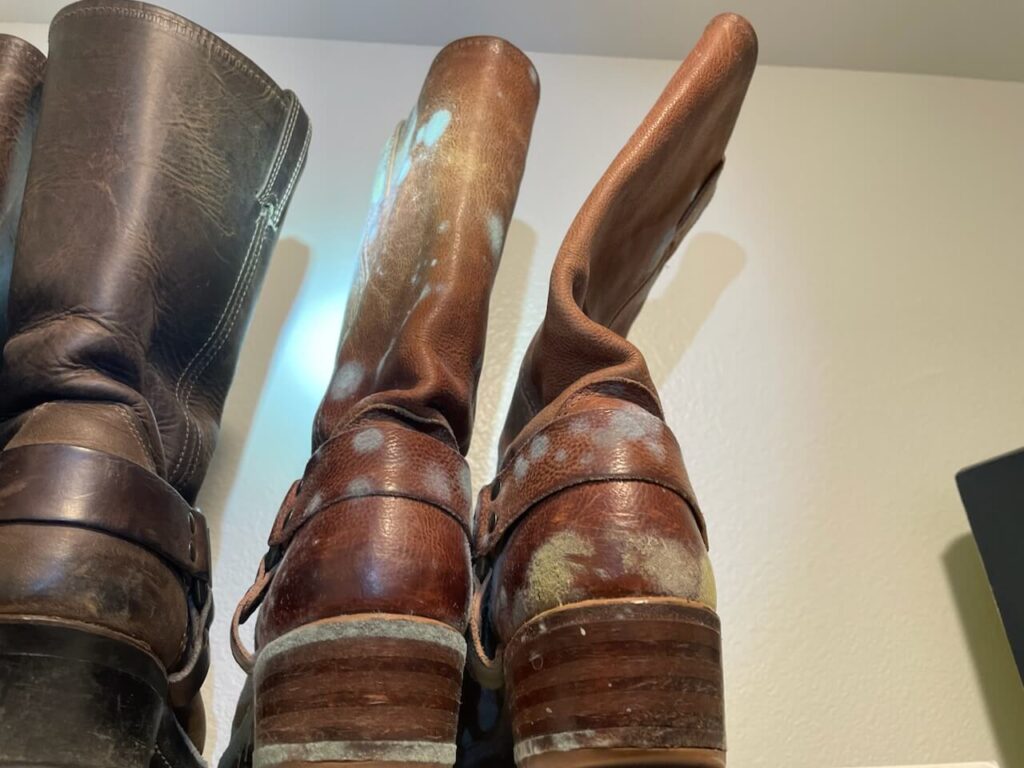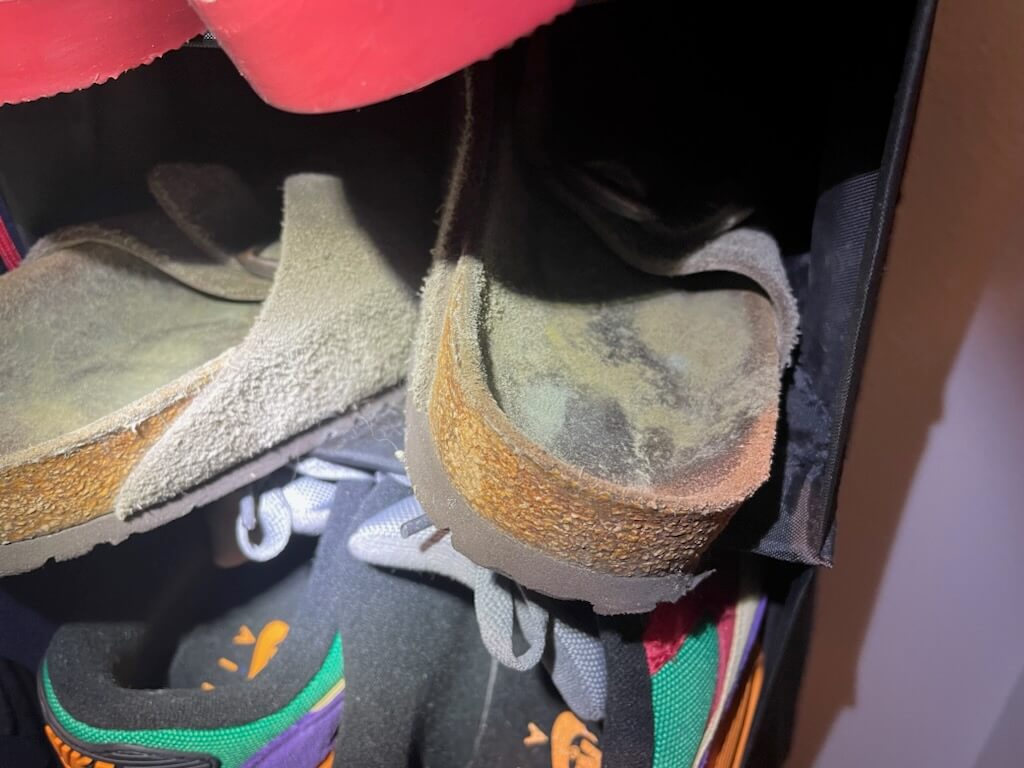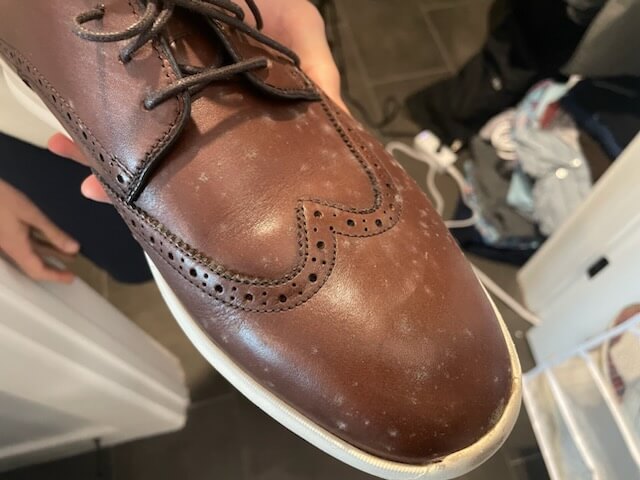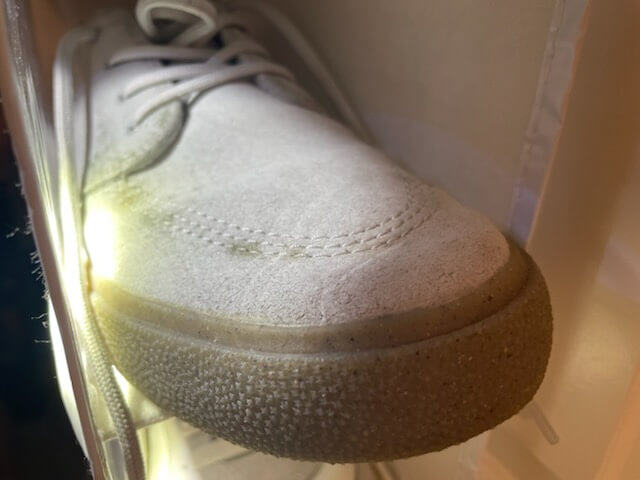Ever stepped into your closet only to find moldy shoes staring back at you? Closet mold is a surprisingly common problem, and while it’s easy to assume the issue is limited to basements or bathrooms, closets can become unexpected mold hotspots—especially in humid or improperly ventilated homes. As Howard Environmental, we want to help you understand why you’re finding mold in your closet and what you can do to protect your shoes, purses, and other treasured items from mold growth.
Here, we’ll explore why mold loves closets, which items are most vulnerable, and how HVAC issues, like Delta T and ventilation, play a critical role. Let’s dive into how to stop closet mold from ruining your shoes and other belongings.
The HVAC Connection: Why Closet Mold Happens

So, why is there mold growth in your closet in the first place? The answer often comes down to indoor humidity levels and HVAC efficiency, especially when it comes to Delta T—an important but often overlooked concept in air quality.
- Humidity and Delta T: Delta T is the temperature difference between the air entering and leaving your HVAC system. If this difference isn’t optimized, your HVAC might not cool or dehumidify air effectively, leading to pockets of high humidity in certain areas, like closets. When warm, humid air enters the cool closet space, it condenses, creating a damp environment perfect for mold growth.
- Common HVAC Inefficiencies:
- Low Refrigerant (Freon) Levels: If refrigerant levels are low, your HVAC system won’t cool the air as effectively, leaving indoor spaces more humid.
- Dirty or Clogged Coils: When coils become clogged, they struggle to regulate the Delta T, leading to an inefficient cooling system and higher moisture levels.
- Air Duct Leaks or Perforations: Tiny leaks or perforations in air ducts can alter air distribution, allowing moist air to linger in certain areas, like closets, increasing the risk of mold.
If you’re noticing persistent closet mold or other small spaces, it may be time to have your HVAC system inspected to ensure it’s running efficiently.
Read more from our blog about Delta T here.
Moldy Shoes? These Are The Most Mold-Vulnerable Items

Once mold has settled into your closet, it doesn’t discriminate—it will go after anything that provides a food source and a bit of moisture. Here are some of the most mold-susceptible materials:
- Suede and Leather Shoes: Organic materials like leather and suede retain moisture easily and are prone to mold.
- Leather Purses and Accessories: Leather handbags and belts, especially when stored in closed spaces, can develop mold quickly in humid environments.
- Fabric Bags and Canvas Items: Natural fibers, such as those found in canvas shoes, fabric bags, and tote bags, are inviting to mold due to their ability to trap moisture.
- Cardboard and Paper Storage: Any boxes or paper-based storage containers absorb moisture and offer mold a great place to grow. Replacing these with breathable containers can make a big difference.
Why Shoes and Leather Goods Are Especially at Risk

Every found moldy shoes in your wardrobe? Leather items and other natural fibers are mold’s favorite targets in the closet. Footwear, in particular, are often exposed to moisture from walking outside, and unless fully dried before storage, they bring dampness into the closet.
Additionally, materials like suede, canvas, and leather offer organic material that mold spores can latch onto and break down, leading to that frustrating musty smell and visible mold growth.
Solutions to Address Closet Mold and HVAC Issues
If you’re dealing with mold in the closet, tackling the root cause is essential to prevent it from returning. Here’s how to go about it:
- Inspect and Service Your HVAC System: Ensure your HVAC system is functioning optimally. Here’s where to start:
- Check Refrigerant Levels: Low Freon levels mean your HVAC isn’t dehumidifying as it should. A professional can test and top up refrigerant levels.
- Clean or Replace Coils: Coils that are clogged with dirt reduce cooling efficiency and increase indoor humidity. Having the coils cleaned helps balance Delta T and reduces moisture levels.
- Seal Air Duct Leaks: If you suspect leaks or perforations in your ducts, sealing them can prevent excess humidity in specific areas, such as closets.
- Control Closet Humidity and Improve Airflow:
- Add a Small Dehumidifier: For closets with mold issues, a small dehumidifier can help keep moisture levels low. Alternatively, use moisture-absorbing packs like silica gel or activated charcoal.
- Ventilate the Closet: If possible, leave the closet door open occasionally to allow air to circulate. Consider replacing closet doors with louvered ones for consistent ventilation.
- Use Fans or Air Circulators: Small, battery-operated fans can keep air moving and reduce humidity buildup in tightly enclosed spaces.
- Proper Storage and Maintenance Tips:
- Avoid Plastic Storage Containers: Instead, opt for breathable fabric or mesh storage bags that allow air to circulate, preventing moisture buildup.
- Dry Items Fully Before Storing: Ensure shoes and any other items are completely dry before placing them in the closet, as even a small amount of moisture can lead to mold.
- Declutter for Better Airflow: An overly packed closet restricts air circulation, making mold more likely to grow. Keep items spaced out as much as possible to improve airflow.
Read here How to Protect Your Clothes and Closet From Moisture
Prevent Mold in the Closet Long-Term: Maintenance Tips

Preventing closet mold isn’t just a one-time fix; regular maintenance can keep your belongings mold-free for the long haul. Here are some preventative steps:
- Regular HVAC Maintenance: Annual or bi-annual HVAC maintenance ensures coils are clean, refrigerant levels are optimal, and ducts are free of leaks, keeping humidity balanced throughout your home.
- Monitor Indoor Humidity: A simple hygrometer can help you keep track of humidity levels. Ideally, indoor humidity should be between 30% and 50%.
- Avoid Storing Damp Items: Never place items that are damp or wet in the closet, especially shoes or gym clothes, as they can introduce moisture and lead to mold.
- Use Humidity-Absorbing Products: Place silica gel packs, charcoal sachets, or closet-specific dehumidifiers in closets to keep the air dry.
Keep Mold Out of Your Closet—and Your Life! Schedule an Inspection Today
Moldy shoes (and finding fungus on other prized items) can be a frustrating issue, but it’s one that can be managed with proper HVAC maintenance and humidity control. Remember, Delta T and overall HVAC efficiency play crucial roles in maintaining ideal indoor humidity levels and preventing mold from taking over your spaces.
If your closet is showing signs of mold, or if your HVAC system may need attention, contact Howard Environmental today. Our team can provide a thorough mold inspection, assess your HVAC’s efficiency, and help you put preventative measures in place to keep your closets and home mold-free. Don’t let mold damage your belongings or your air quality—schedule an inspection with us and enjoy a healthier, cleaner home environment.Keep Reading: Ways to Check for Mold Before It’s Too Late

